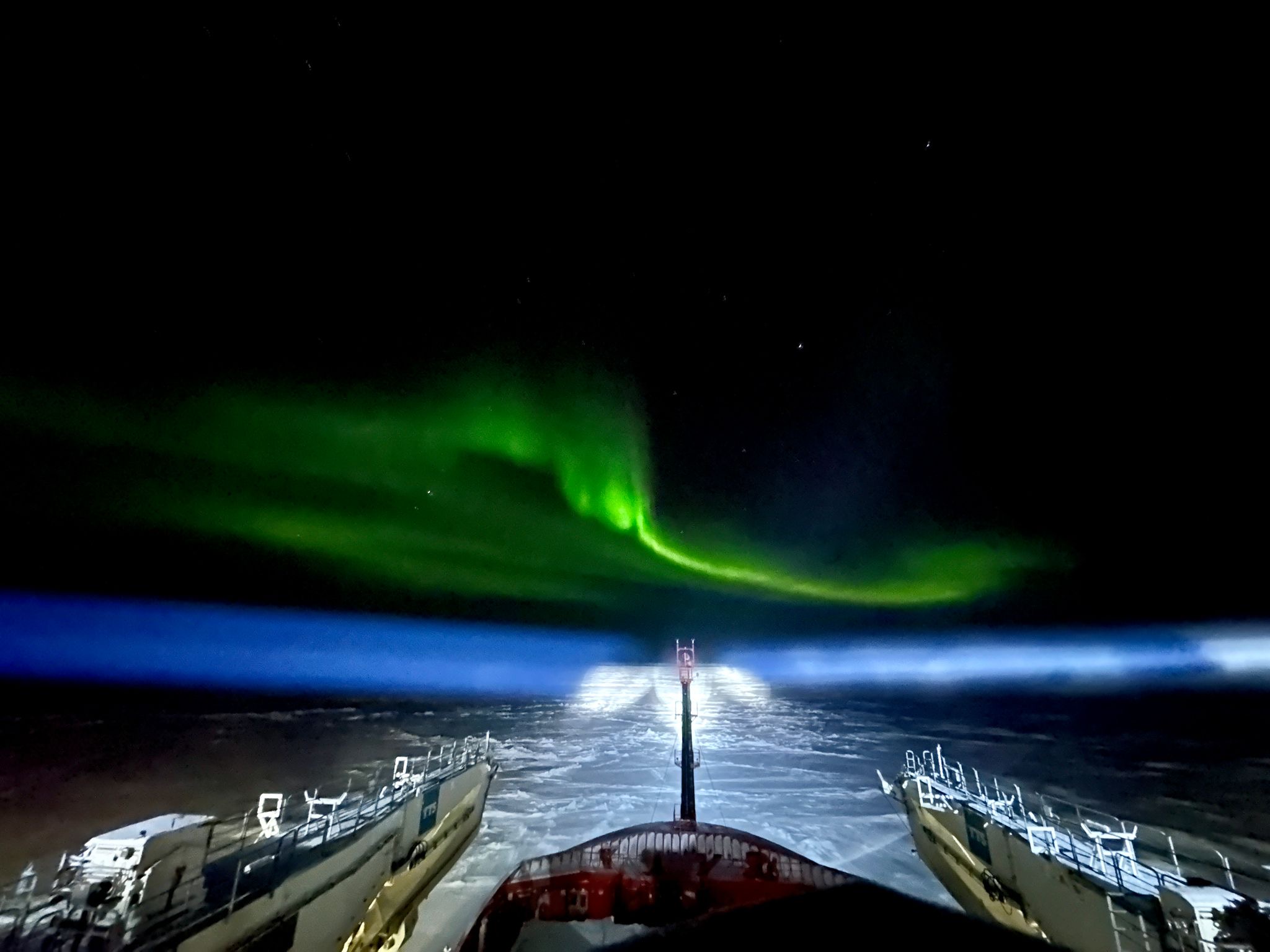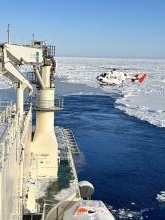Two of the Royal Hobart Hospital’s staff were part of a rescue mission to Antarctica in late August.
Dr Juan Carlos Ascencio-Lane, Emergency Department (ED) Staff Specialist, and Registered Nurse Kerrie Crossley from the hospital’s Hyperbaric Unit were called on to help the Australian Antarctic Division (AAD). A staff member at one of Australia’s three Antarctic research stations had to be brought to Hobart for critical specialist treatment.
It was the end of winter, and it was too early yet for flights to resume to the Australian runway on the world’s windiest, coldest continent.
This would be the earliest that the Australian Antarctic research program would attempt a rescue mission.
The Australian ice runway in Antarctica only operates in the summer, so their best bet was the RSV Nuyina, a ship with ice-breaking capabilities and a helicopter deck.

Juan and Kerrie were part of a crew of about 50, with the ship and helicopter crew and healthcare staff including the lead doctor for the AAD and the ship’s doctor.

“This was my first time going to Antarctica,” said Juan, who is a diving and hyperbaric physician and Naval reservist with the Australian Defence Force. “However, my training in the Emergency Department has prepared me for the unexpected. I’ve also done ships’ missions before, so I have done some preparation—but nothing like this.”
Juan and Kerrie had a week’s notice because of the rapid need for retrieval and had already been rostered for hospital duties. “Both the ED and the Diving & Hyperbaric Department were amazing in their support,” said Juan. “There was no hesitation to ensure I got away with the AAD.” Juan’s family was as supportive. “I have four kids, so I spoke with my wife, who works in Secondary Triage at Ambulance Tasmania. She didn’t even hesitate and said I had to go—she’s been amazing.“

It took 10 days for the ship to get to 80 nautical miles from Casey, one of Australia’s three research stations in Antarctica. “The journey was unbelievable,” said Juan.
“We stopped due to the thickness of the ice, but I was told this was the earliest rescue, and that the Nuyina performed better than expected and far out-sailed the Aurora.” (Nuyina, pronounced noy-yee-nah, means “Southern lights” in the Tasmanian Aboriginal language palawa kani.)
“We had a big swell on the journey south,” recalled Juan, “but quickly got used to the ship’s rocking. We spent each day doing drills and running through potential scenarios. The ship’s crew, helicopter crew, AAD crew and healthcare crew came together to ensure we were working in unison.”
The weather was rough and visibility was very poor, but fortunately they had a brief window to act.

“When we got to 80 nautical miles out, we had a break in the weather—but only for that day,” recalled Juan. “If we had been delayed, the weather would have closed in again and the helicopters would not have been able to have taken off to retrieve the patient.” Eight days later, the crew delivered the patient to the Royal Hobart Hospital for medical treatment.
In a crisis, teamwork makes all the difference. “I'm very fortunate to work in a great team environment in the ED and the Hyperbaric Unit at the Royal,” said Juan. “I've learnt to work with so many people and to understand the importance of team dynamics. I think that prepares me for stuff like this.”
Juan also appreciates the amazing learning opportunities on the job: “At the Royal ED we see everything, which is very unique compared to a lot of city EDs around the country. Within Hyperbaric, I've also been exposed to treating frostbite so between both environments I get to see a variety of weather-born pathologies.”
We thank our incredible healthcare staff who go above and beyond every day and whenever duty calls!